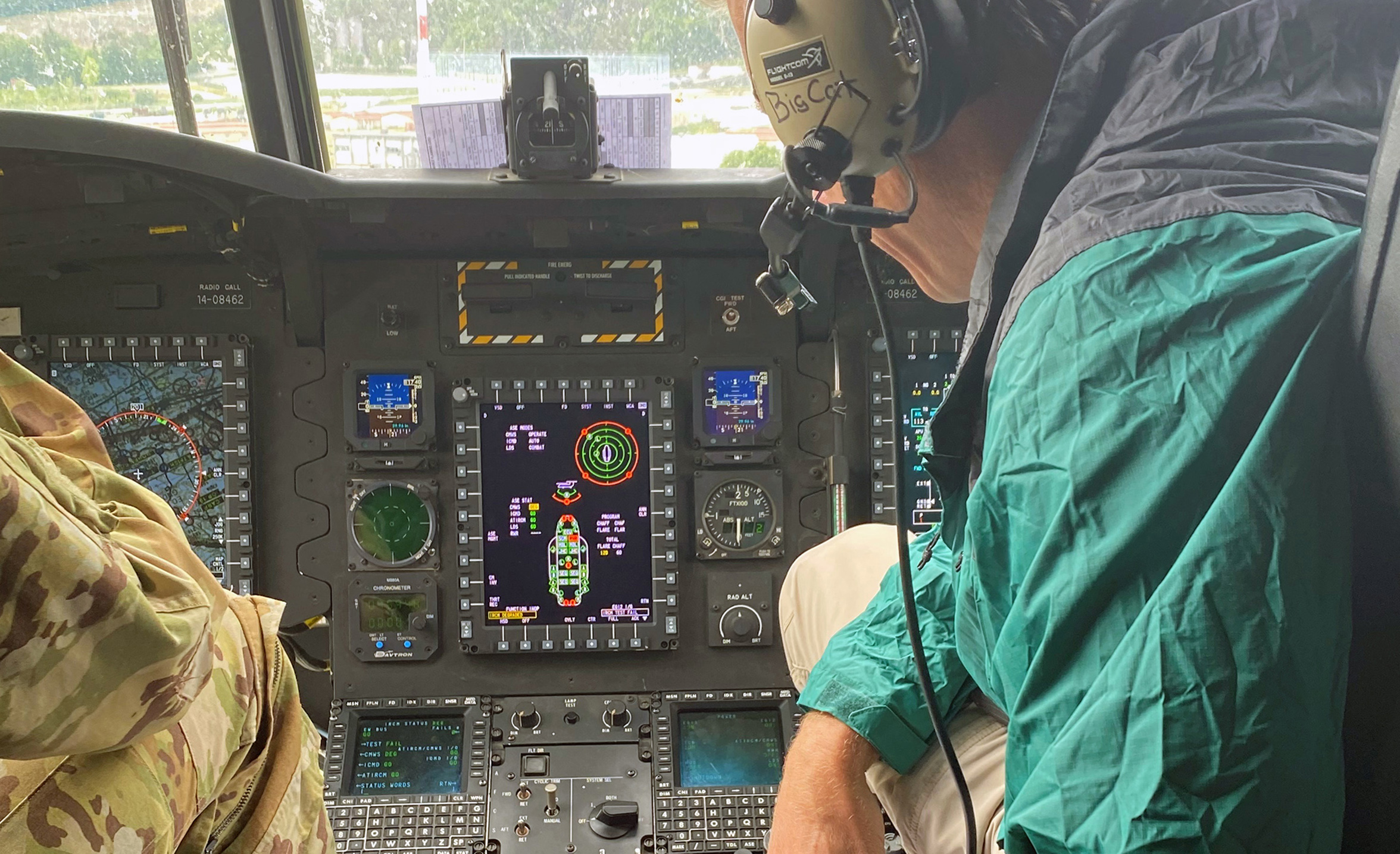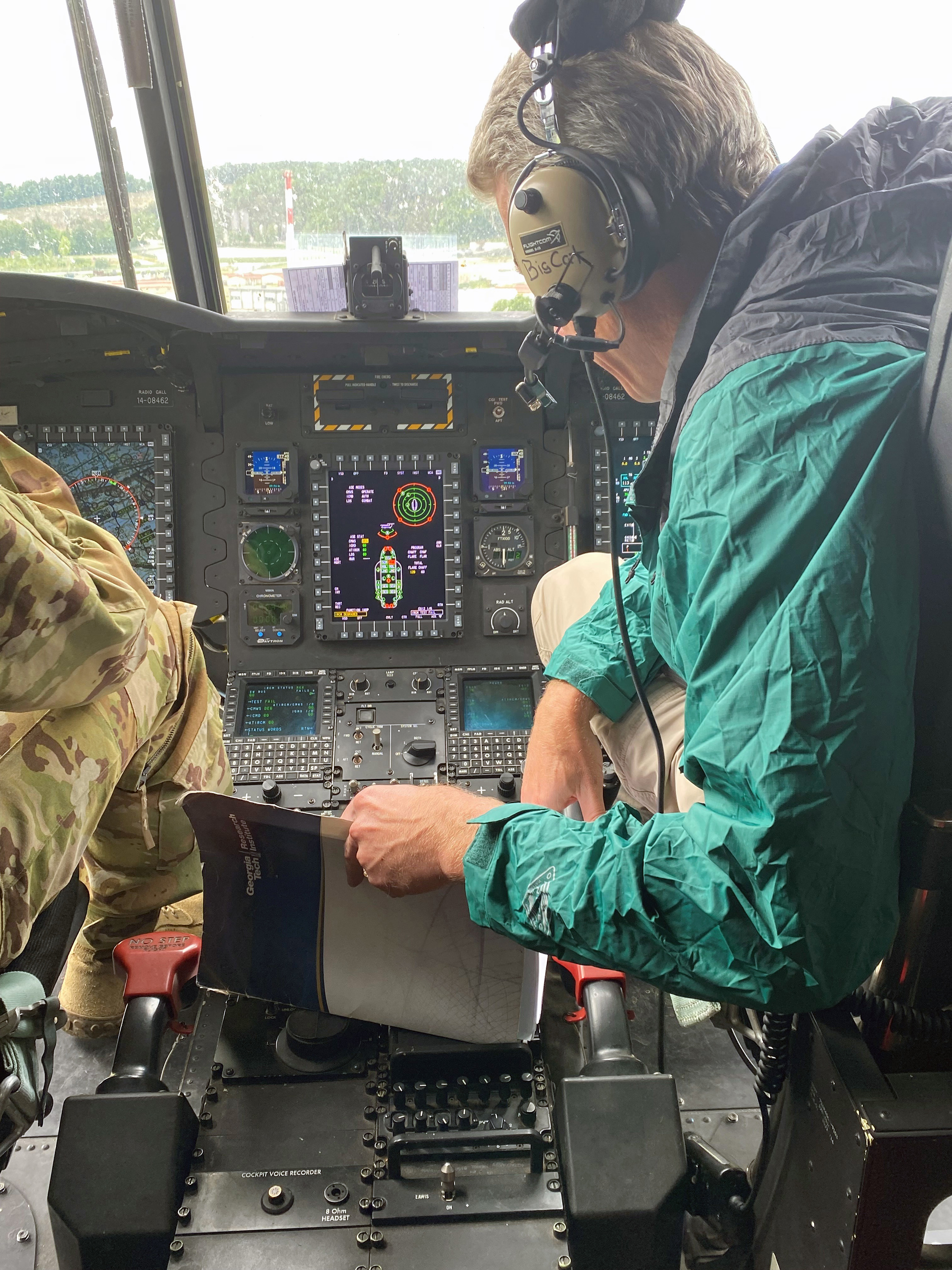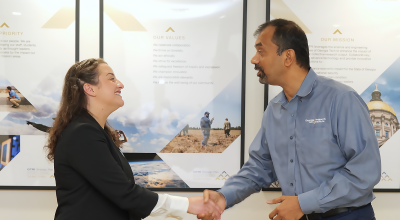
A virtual training environment developed for aircrews of U.S. Army rotorcraft has been deployed to training ranges in the U.S. and Europe to help familiarize warfighters with the threats they may encounter – and help them practice tactics, techniques, and procedures to defeat those threats.
Developed for the Project Management Office for Aircraft Survivability Equipment (PM ASE), the Aircraft Survivability Equipment B-Kit Emulator (ABE) operates on Apache, Black Hawk, and Chinook helicopters, providing simulated audio and visual cockpit indications of threats to the aircraft. Used on training ranges, the system connects by radio to ground-based threat emitters to provide pilots and aircrews with realistic threat simulations that can be part of multi-aircraft training events.

“ABE fully emulates the threat display information that the aircrew would get from their aircraft survivability equipment (ASE) and the experience is like what they would get from flying over an active threat range with real threat systems,” said Linda Viney a principal research engineer at Georgia Tech Research Institute (GTRI), which developed the ABE system. “It allows the crews to see threats on their displays and train on what to do to complete a mission while operating in a hostile environment.”
During range-based training missions, the ABE system receives data from a ground-based threat emitter which can simulate a variety of scenarios, including a threat radar system locking onto the helicopter – and the launch of surface-to-air missiles. ABE and the threat emitter work together to present aircrews with a variety of threat scenarios that they would respond to by employing countermeasures or taking evasive action.

The ABE software and equipment to receive signals from the ground emitter are installed at the training range and provide realistic threat information to the aircrews. “The crew cannot tell the difference between ABE and the real ASE system,” said Viney, who is also laboratory director at GTRI’s Applied Systems Laboratory. “ABE is connected to the aircraft cockpit, so it drives the threat display and fully emulates the ASE equipment.”
ABE was designed to support training events involving multiple aircraft, including the different rotorcraft used by the Army. While the tactics and techniques used to respond to threats vary by helicopter type, the threat simulation itself is the same across all three U.S. Army rotorcraft.
Because the training doesn’t depend on maintaining and operating real threat radar systems on the ground, the scenarios can be varied extensively so crews don’t see the same threats each time they visit a training range. The experience of seeing a variety of threat scenarios at different locations helps aircrews learn to respond more quickly and accurately, Viney said.
Beyond simulating threats to train aircrews, the system can also show commanders orchestrating training events from the ground what is happening in the air and how aircraft are responding to threats. ABE evaluates aircrew countertactics that are used to calculate if an aircraft would have been taken out of action by a threat.
“For large events at training ranges involving operational forces on the ground and helicopters in the air, ABE can show commanders where the air assets are and what they are doing,” Viney explained. “If the system determines that the commander would have lost a helicopter, that helps them react and change plans based on the absence of that asset. It can support a much larger training venue.”
In addition to providing training simulation for both aircrews and ground commanders, ABE also measures the effectiveness of crew actions to determine the likely outcome of engagements with threats. This feedback can further support the goals of the training program.
Because of cost reasons, ASE systems – which can include a radar warning receiver, missile warning receiver and countermeasure system – have typically been installed only on rotorcraft that are operationally deployed – not those used for training purposes. The ABE system, which consists of software that runs on computer hardware that is part of each rotorcraft, helps fill that gap while aircrews are training at the ranges.
The ABE system is now deployed at the Army’s National Training Center (NTC) at Fort Irwin, Calif., the Joint Readiness Center (JRTC) at Fort Polk, La., and the Joint Multinational Readiness Center (JRMC) in Germany. The deployment began after a final test event was held at an Army range-based Integrated Air Defense System training event.
Additional software is being developed by GTRI that will allow crews to train against simulated threats as part of normal operations after they leave the test ranges. This “home station” training will be hosted on an existing mission computer on-board the aircraft, making it always available to the aircrews.
Key team members for the ABE project include Matt LeBlanc, Jonathan Martin, Tim Palmer, Andy Schoen, Scott Silence, and Trevor Stittleburg.
Writer: John Toon (john.toon@gtri.gatech.edu)
GTRI Communications
Georgia Tech Research Institute
Atlanta, Georgia USA
The Georgia Tech Research Institute (GTRI) is the nonprofit, applied research division of the Georgia Institute of Technology (Georgia Tech). Founded in 1934 as the Engineering Experiment Station, GTRI has grown to more than 2,900 employees, supporting eight laboratories in over 20 locations around the country and performing more than $940 million of problem-solving research annually for government and industry. GTRI's renowned researchers combine science, engineering, economics, policy, and technical expertise to solve complex problems for the U.S. federal government, state, and industry.



